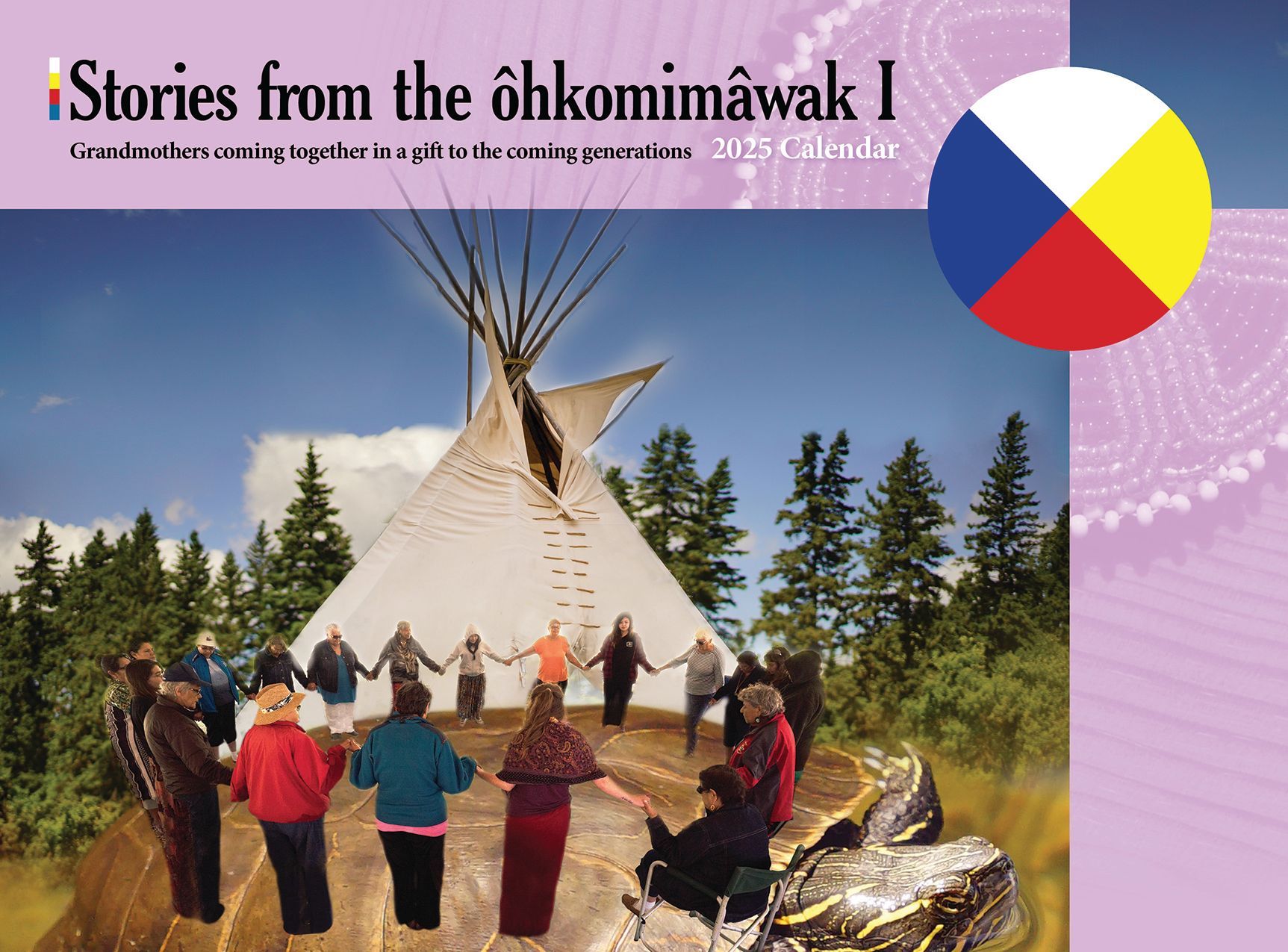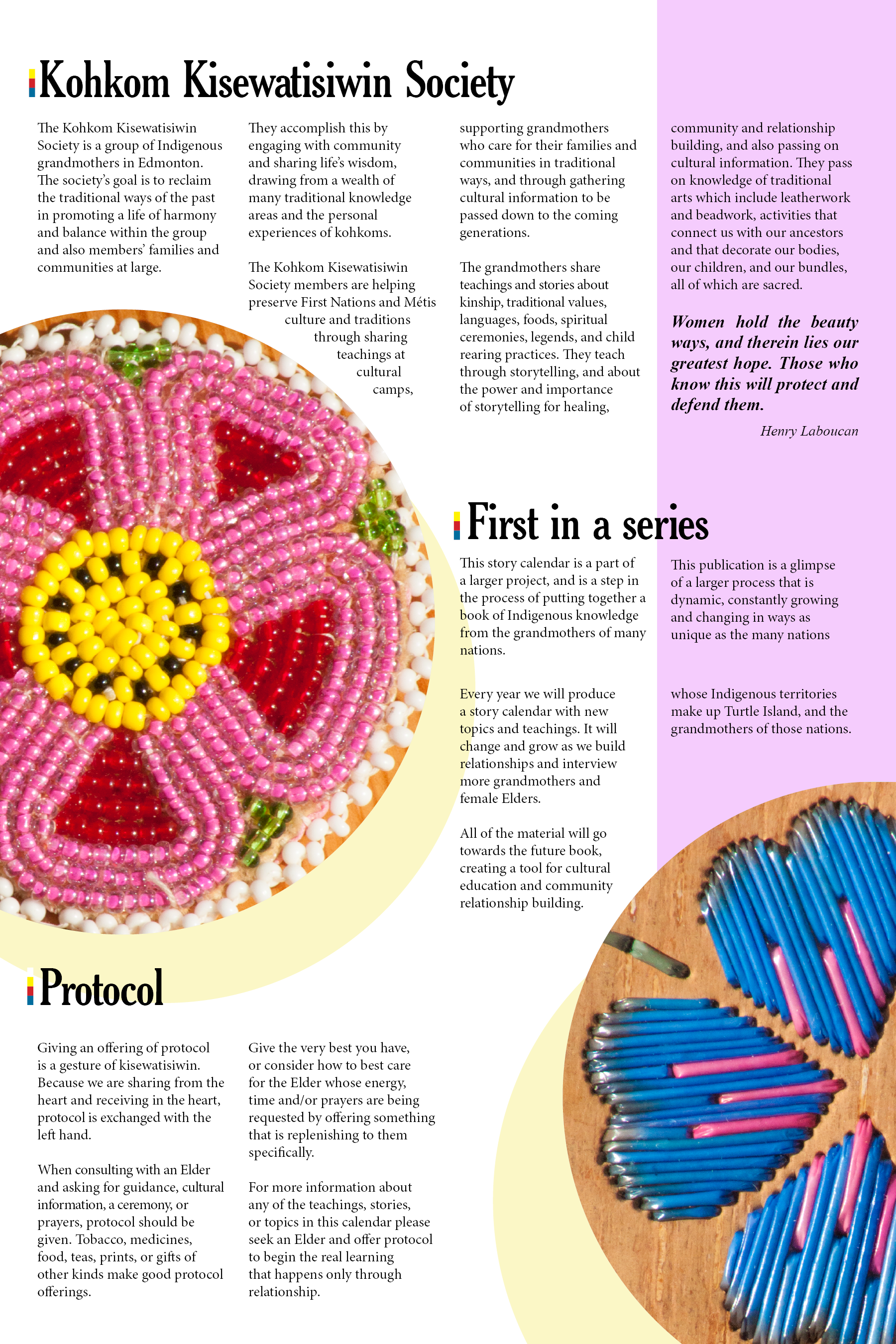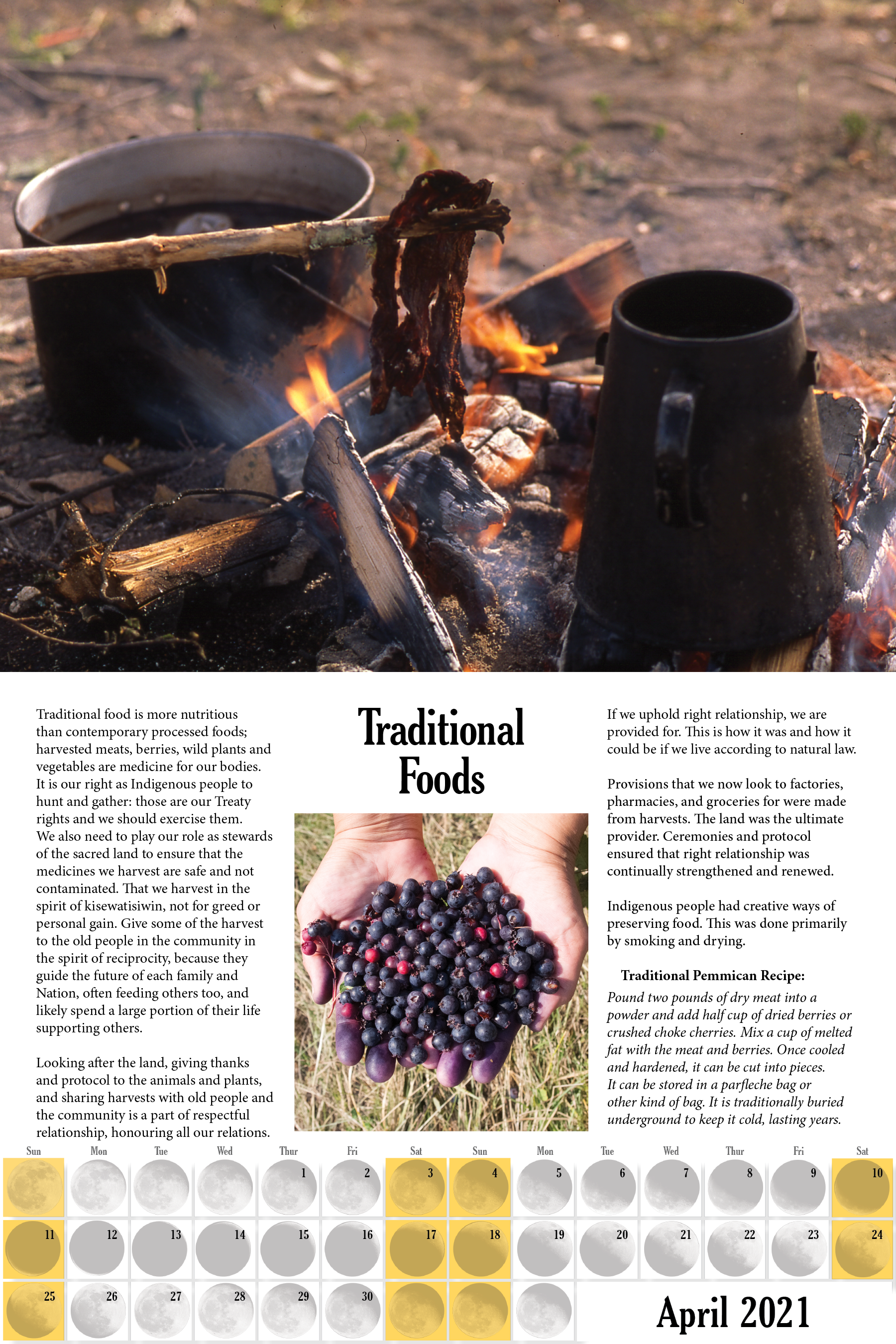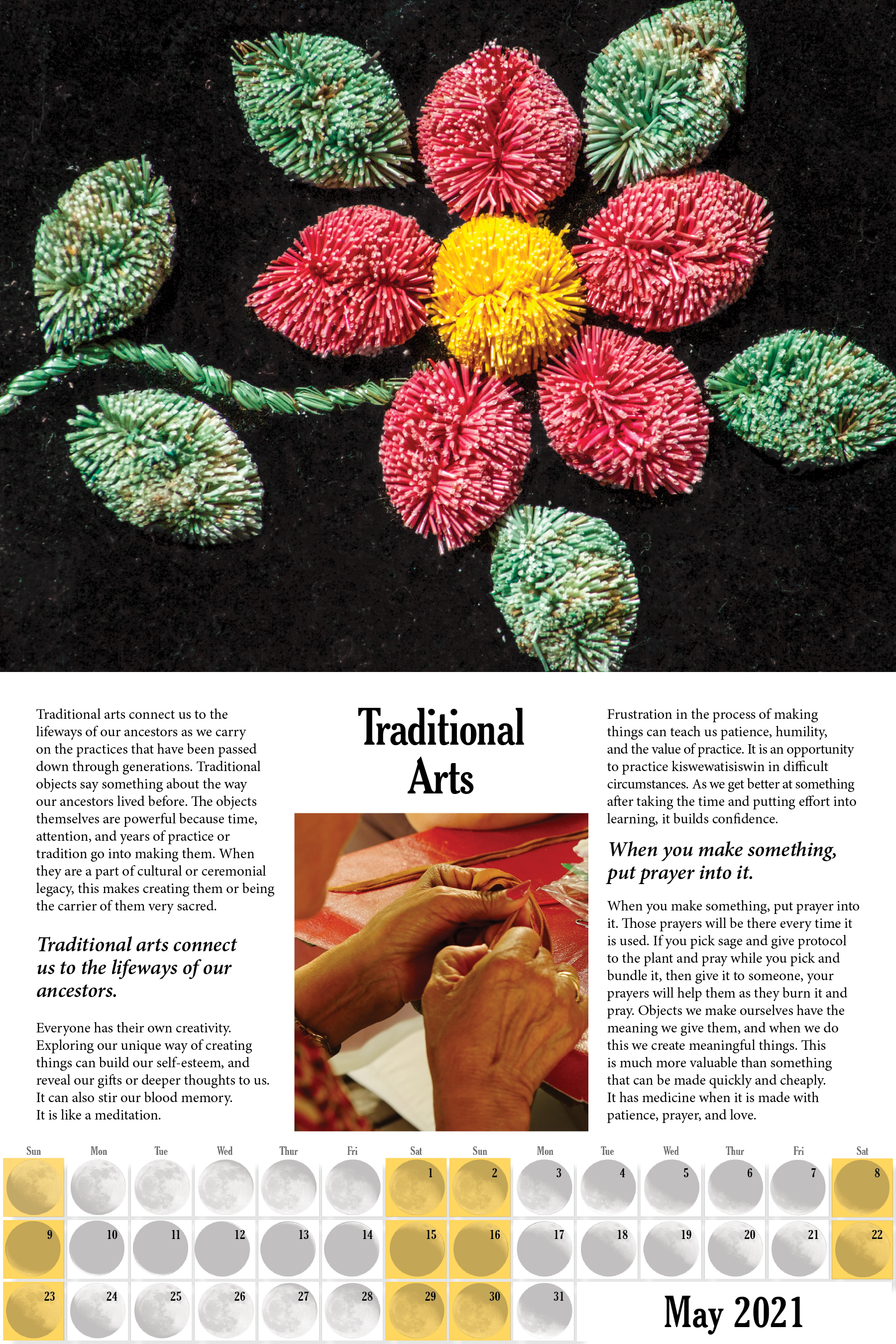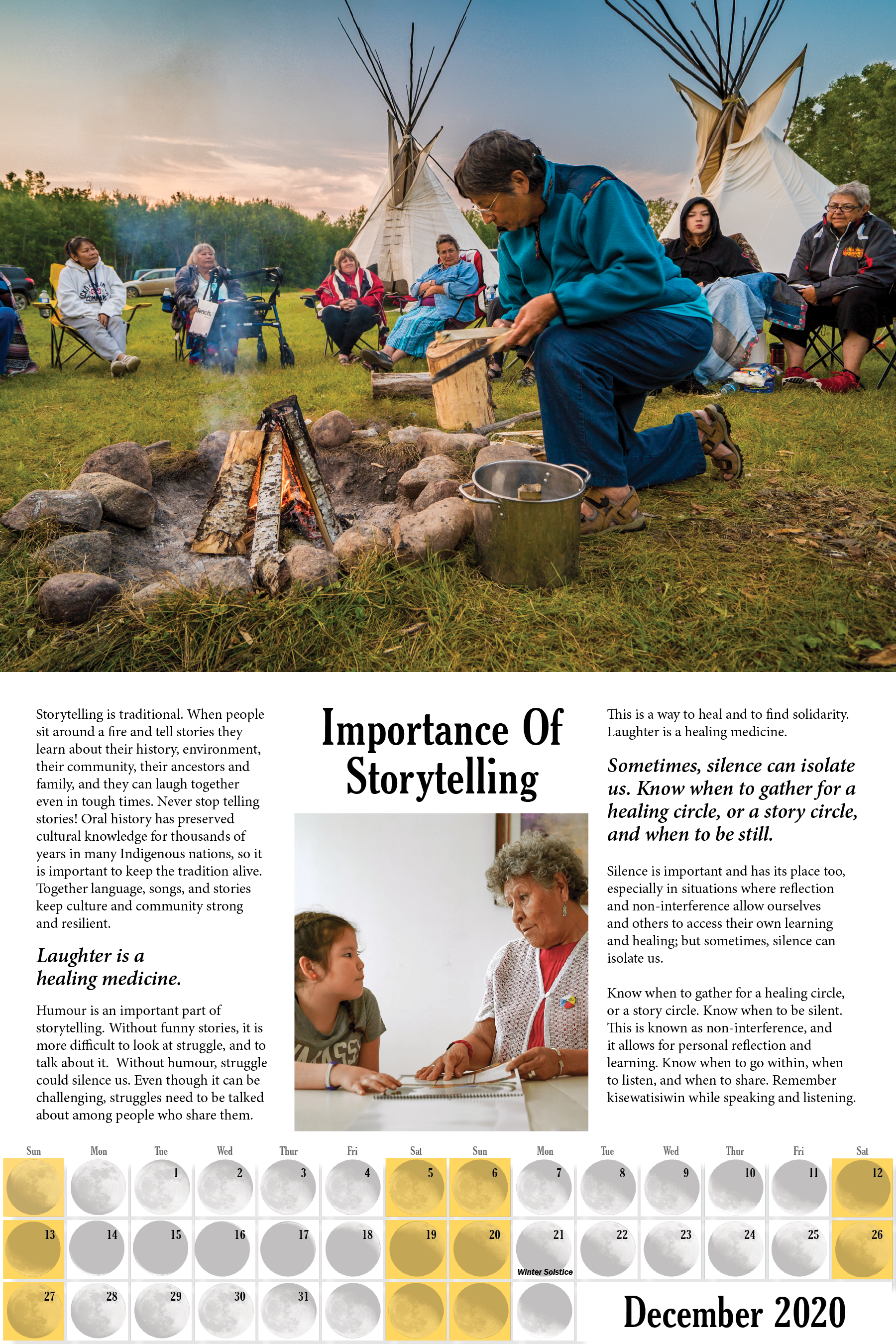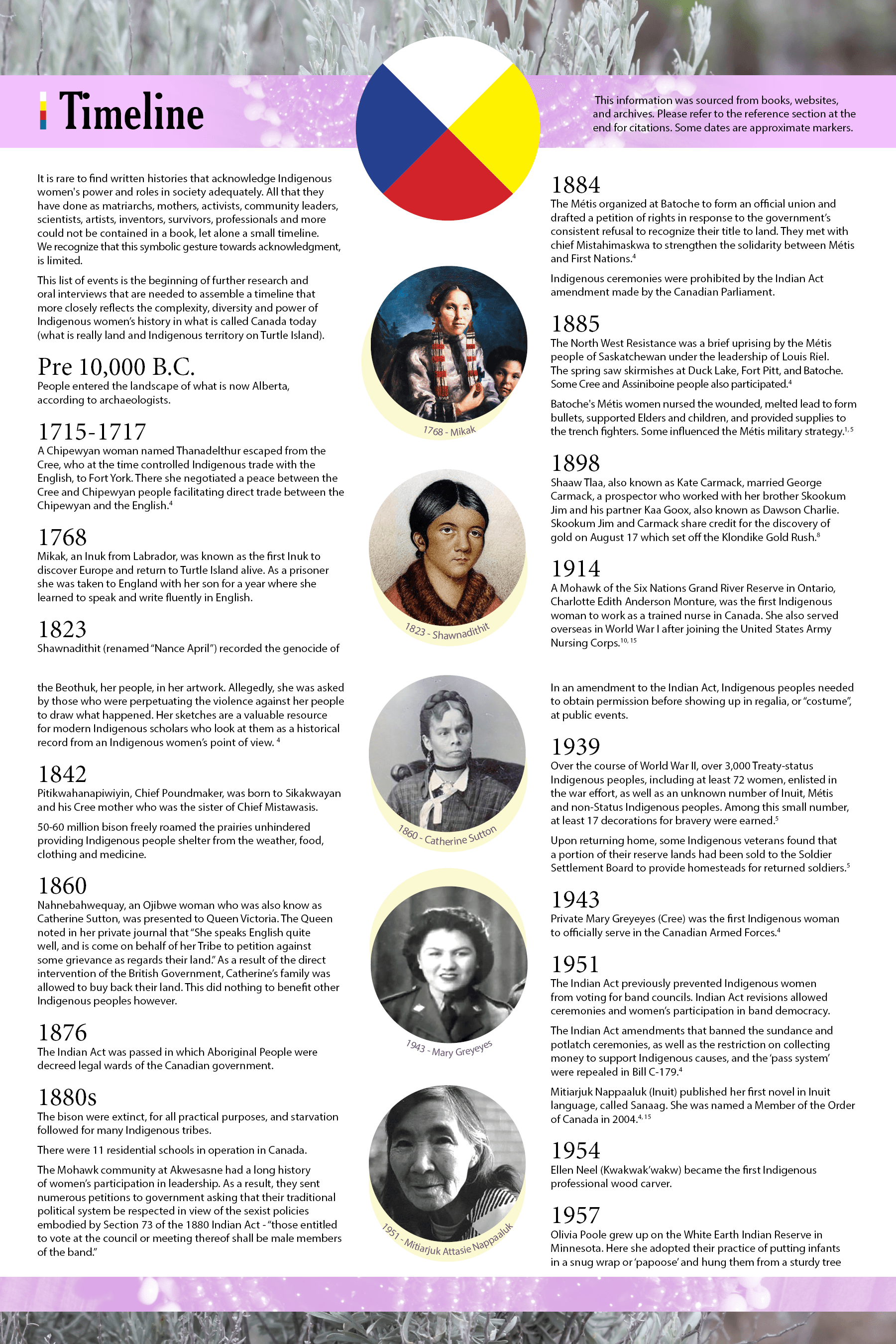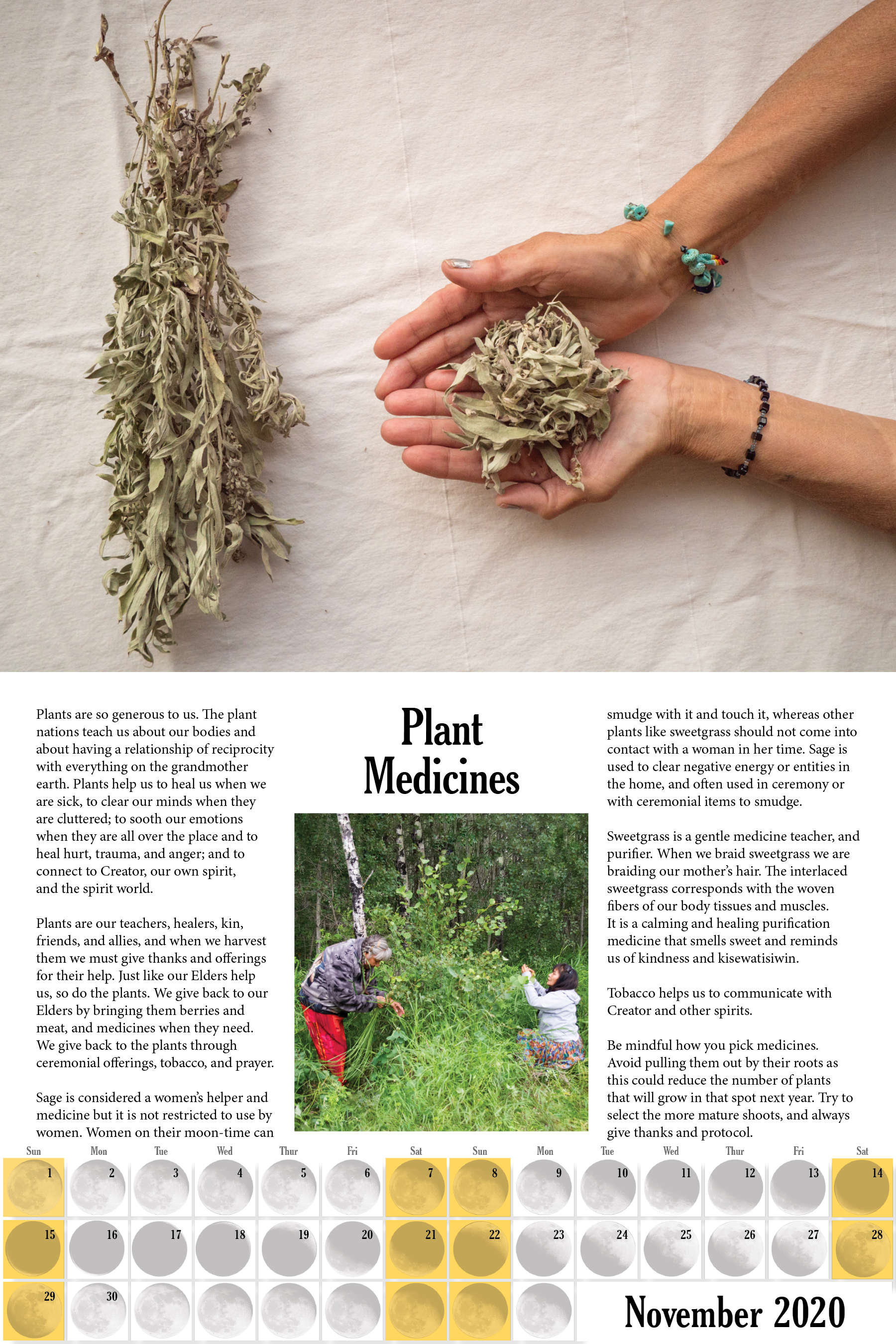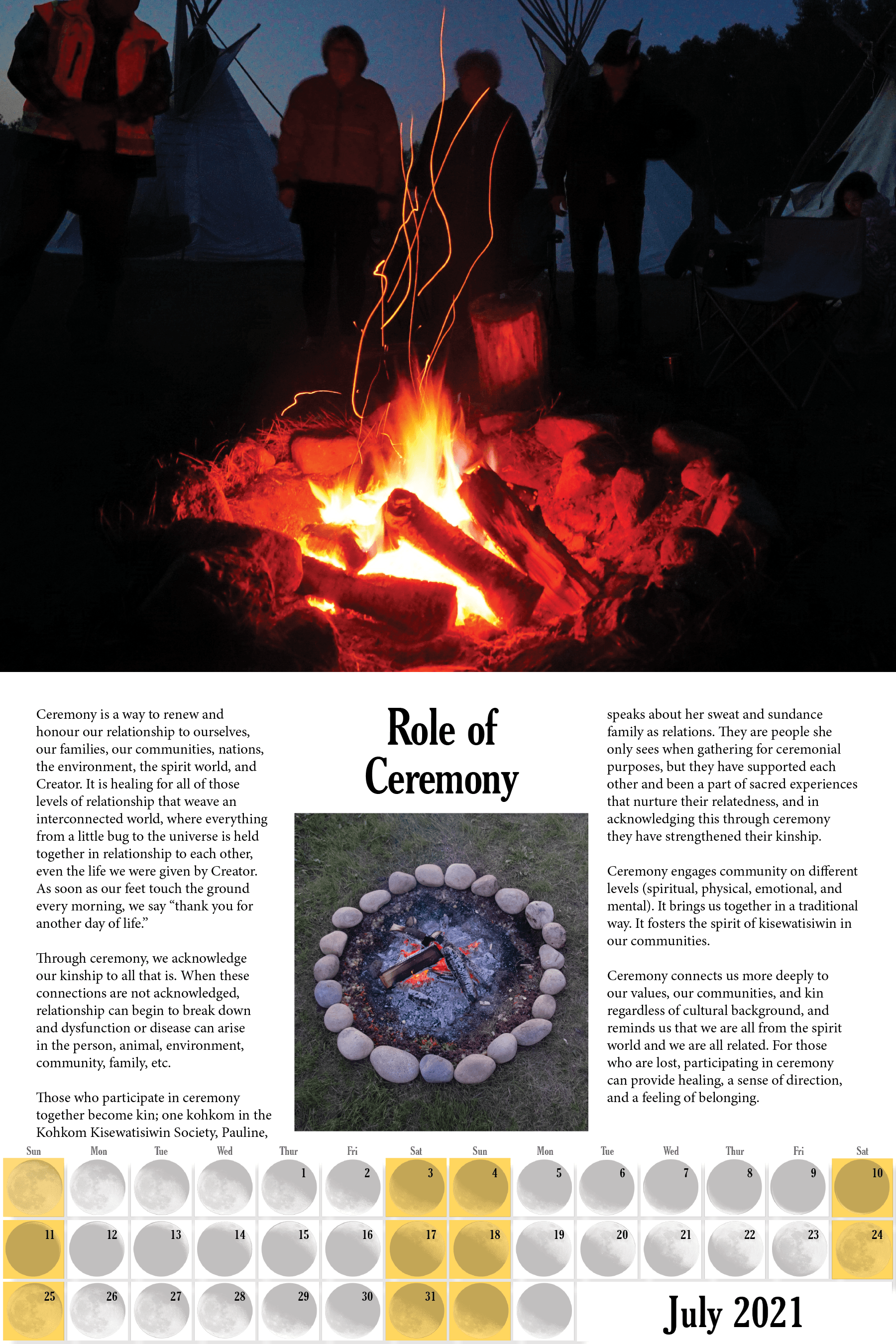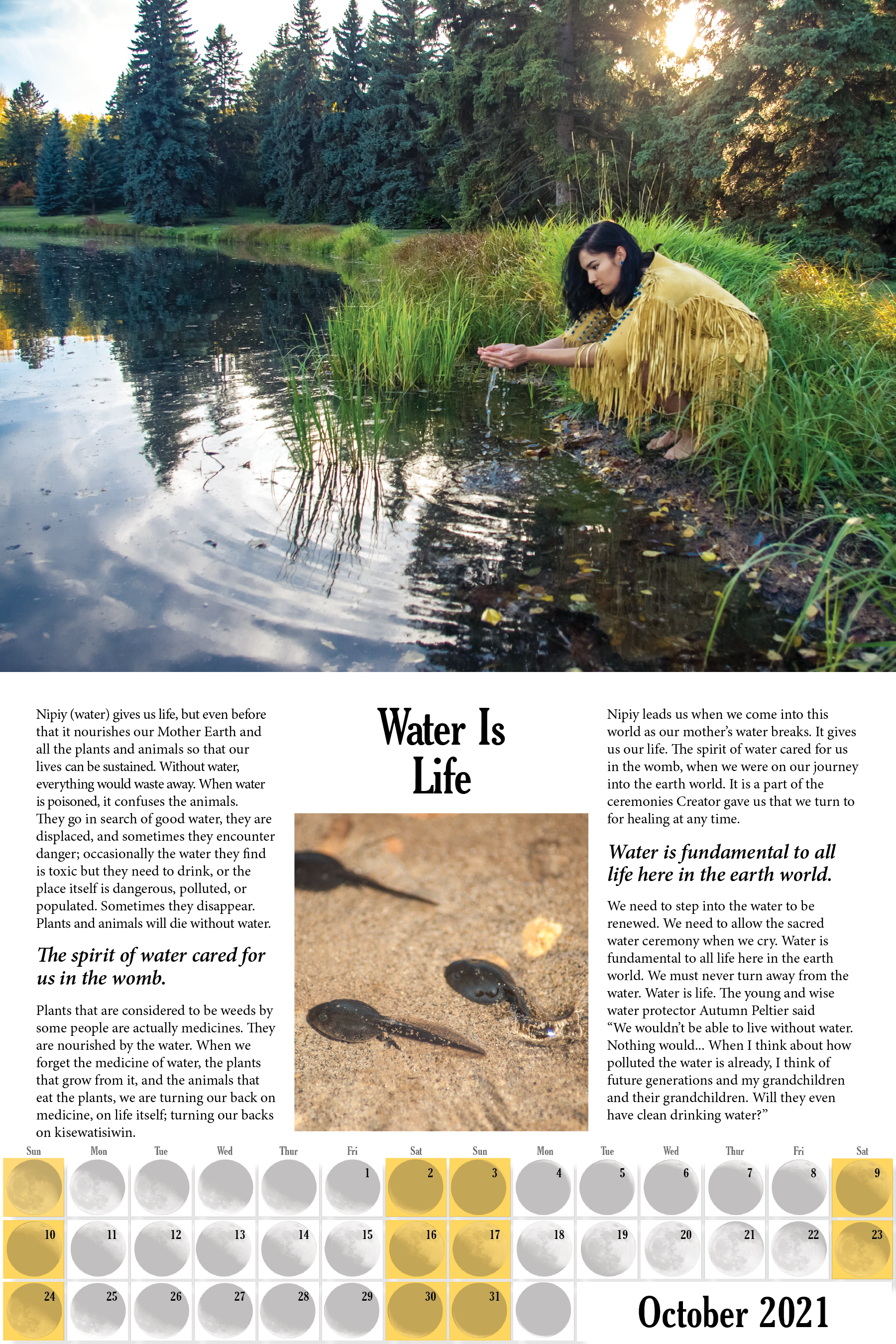STORIES FROM THE ÔHKOMIMÂWAK
Stories From The ôhkomimâwak I calendar is a legacy work meant to capture messages that grandmothers and female traditional Elders wish to pass on to the coming generations of their own families and communities, and to the public.
The project began with Elsie Paul, a Cree/Métis Elder who is a dedicated volunteer and community member. She and her kind friends at the Kohkom Kisewatisiwin Society are the reason this calendar exists. Without their encouragement, ideas, and willingness to share cultural information to be assembled in this form, it would not have come together.
The women who contributed information to be shared in the calendar are from various Indigenous nations, all with different origins, and life experiences. They decided to work together to create a powerful gift for their communities in collaboration with Circle Teachings Publishing.
It has been an honour for the Circle Teachings team to work alongside these women to bring this publication into form.
Included in this resource are:
- Women-focused history timeline from the 17th century to today.
- Fifty two photographs and illustrations are included to accompany both the timeline and story months.
- Fifteen stories that introduce teachings shared by kohkoms.
- Building Relationship
- Crying Is A Ceremony
- Water Is Life
- We All Come From The Spirit
- Kindness And Forgiveness
- Plant Medicines
- Wahkotowin
- Importance Of Storytelling
- Language and Culture
- Traditional Child Rearing
- Nature Is Our Teacher
- Traditional Foods
- Traditional Arts
- Four Directions
- Role Of Ceremony
- Altogether 46 pages of colour images and 9,000 words.
